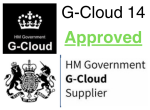FinOps, short for Financial Operations, involves the collaboration of finance, operations, and technology teams to optimize cloud costs. Establishing FinOps domains gives a structured approach to effectively manage cloud spending. Let’s look at a couple of reasons to implement FinOps practice and the important benefits it brings to the business.
Importance of FinOps:
- Cost Control and Optimization: FinOps enables organizations to gain control over their cloud spending by implementing strategies for cost optimization. Without proper management, cloud costs can spiral out of control, leading to budget overruns and inefficiencies.
- Financial Accountability and Transparency: FinOps promotes financial accountability and transparency by involving finance, operations, and technology teams in cloud cost management processes.
Reasons to Implement FinOps:
- Optimize Return on Investment (ROI): Effective FinOps practices enable organizations to maximize the return on their cloud investment by ensuring that resources are utilized efficiently and cost-effectively.
- Optimized Scalability and Agility: Cloud computing offers scalability and agility, allowing organizations to rapidly scale resources up or down based on demand. However, this flexibility can result in unpredictable costs if not managed effectively and finops provide that layer of management.
FinOps Foundation Domain Framework provides organizations with a structured approach to cloud cost management, leading to:
1. Enhanced transparency and accountability across teams, fostering a culture of cost-consciousness development in the cloud environment and improves collaboration.
2. Improved decision-making through data-driven insights and optimization strategies, resulting in significant cost savings and better resource utilization.
Overview of a few crucial FinOps domains to run an effective practice for your cloud implementation.
1. Cost Visibility and Accountability: Implement tools like AWS Cost Explorer, Azure Cost Management, or Google Cloud’s Billing Reports to gain visibility into cloud costs. Define cost allocation tags and resource groups for accurate cost tracking. Assign accountability by integrating cost management into your team’s workflows.
2. Budgeting and Forecasting: Set up budgets based on historical usage data and future growth projections. Leverage tools such as AWS Budgets or Azure Budgets to monitor spending against these budgets. Establish alerting mechanisms to notify teams when expenditure approaches predefined thresholds.
3. Resource Optimization: Utilize cloud provider tools like AWS Trusted Advisor, Azure Advisor, or Google Cloud’s Cost Management to identify underutilized resources, oversized instances, or idle storage. Implement automation scripts or use serverless functions to schedule resource shutdowns during non-business hours.
4. Purchasing Options: Evaluate Reserved Instances (RIs), Savings Plans, or Committed Use Discounts (CUDs) offered by cloud providers. Analyze usage patterns to determine the most cost-effective purchasing options. Leverage tools like AWS Cost Explorer’s Cost and Usage Reports (CUR) or Azure Cost Management’s Usage Details for granular insights.
Conclusion
By establishing these FinOps domains, organizations can effectively manage cloud costs, optimize resource utilization, and foster a culture of cloud cost-consciousness across teams. Continuously monitor and iterate on these domains to adapt to changing business requirements and evolving cloud technologies.
Book a free, no obligation consultation with us today. We will be happy to answer your questions and guide you through implementing or improving your FinOps practice by examining and optimizing technology, operation and financial aspects of your cloud & IT infrastructure.







